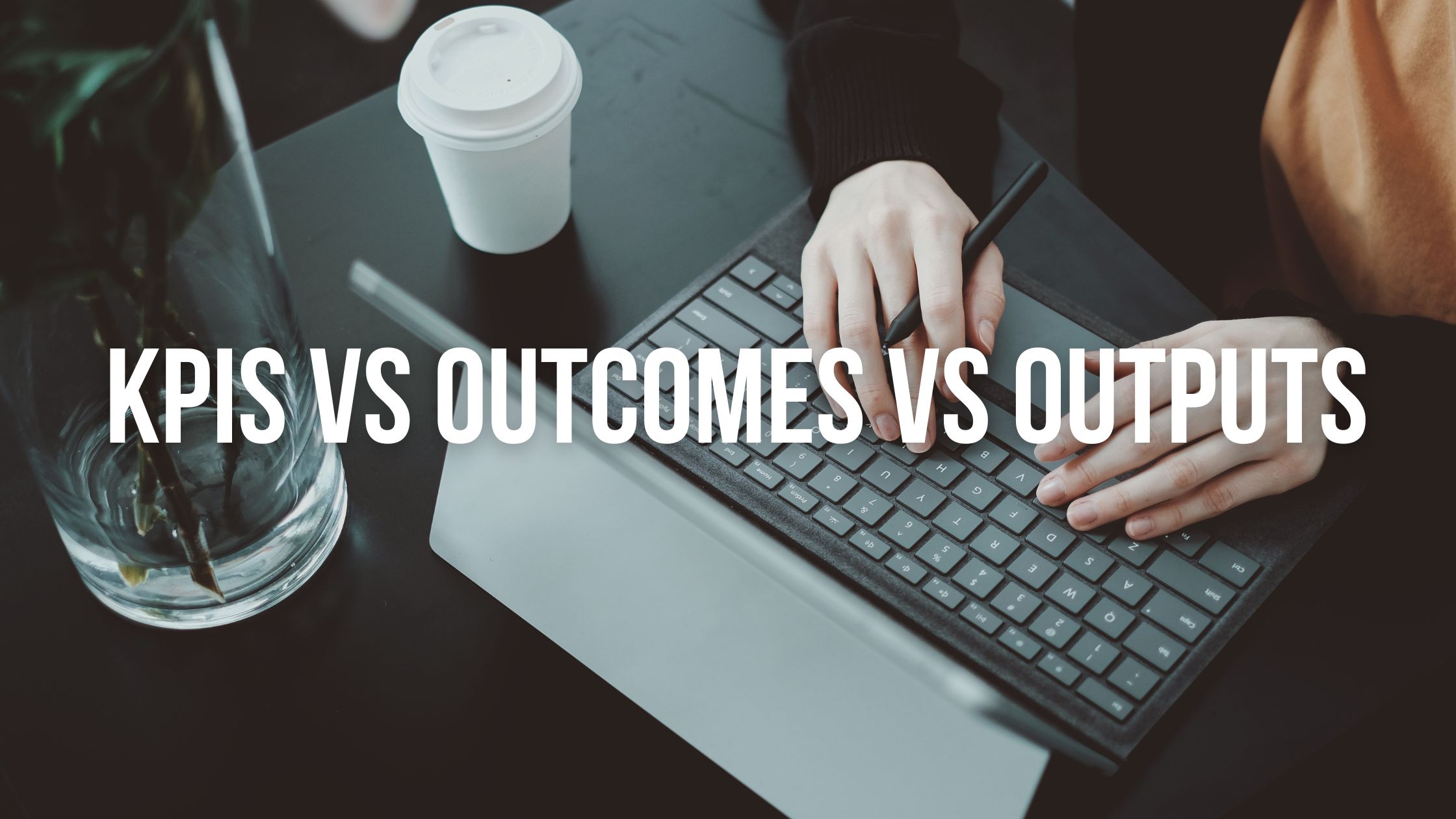TL;DR:
KPIs, outcomes, and outputs are distinct but interconnected concepts essential for measuring success. Outputs are the tangible deliverables you produce, outcomes are the meaningful changes or impacts resulting from those outputs, and KPIs are the specific metrics used to track progress toward your goals. Understanding and using these correctly helps organizations focus on what truly matters, avoid busy work, and drive strategic results.
Any organization that wants to accomplish its objectives must know how to measure progress. However, KPIs, outputs, and outcomes are frequently used interchangeably, which results in misaligned strategies and lost opportunities. Teams are better able to monitor what really matters and produce significant outcomes when these concepts are made clear. See our article on goals, objectives, and outcomes to learn more about how these relate to more comprehensive planning.
Definitions: KPIs, Outcomes, and Outputs
Key Performance Indicators (KPIs):
KPIs are measurable indicators that monitor how well a company is accomplishing its operational and strategic goals. These are the key performance indicators that are most important for success, like revenue growth, customer satisfaction, or staff retention. KPIs are constantly connected to particular goals and are evaluated frequently to track advancement.
Outputs:
The tangible goods, services, or deliverables that a project or process produces are called outputs. These are quantifiable, instantaneous outcomes, such as the quantity of training sessions conducted, reports written, or new features introduced. Usually short-term in nature, outputs are directly controlled by the organization.
Outcomes:
The longer-term, more extensive effects or modifications brought about by the outputs are called outcomes. They show the effect on individuals, actions, or circumstances—for example, better customer loyalty, a larger market share, or better employee abilities. Results are in line with the organization’s long-term objectives and are frequently impacted by outside variables.
How They Relate and Differ
-
Outputs are what you produce.
-
Outcomes are the changes or benefits that result from those outputs.
-
KPIs are the metrics you use to measure progress toward your objectives, which may track outputs, outcomes, or both.
When to Use Each
-
KPIs: Use to monitor progress against strategic goals in any area-business, HR, marketing, etc. For example, tracking employee turnover rate in HR or sales growth in business.
-
Outputs: Use to manage and report on the completion of specific tasks or deliverables, such as the number of campaigns launched in marketing or training sessions held in HR.
-
Outcomes: Use to evaluate the real-world impact of your efforts, like increased customer retention in business or improved employee engagement in HR.
Examples Table: KPI vs Output vs Outcome
| Initiative | KPI Example | Output Example | Outcome Example |
|---|---|---|---|
| Marketing Campaign | Click-through rate (CTR) | Number of emails sent | Increase in sales conversions |
| Employee Training | % of employees certified | Number of training sessions held | Improved job performance |
| Product Launch | Customer adoption rate | Number of features released | Higher customer satisfaction |
| Customer Service | Average resolution time | Number of tickets resolved | Increased customer loyalty |
Tips for Setting Meaningful KPIs
-
Align with Strategy: KPIs must connect directly to your organization’s strategic objectives.
-
Be Selective: Focus on the 1–5 most critical KPIs per department to avoid information overload.
-
Make Them SMART: Ensure KPIs are Specific, Measurable, Achievable, Relevant, and Time-bound.
-
Set Clear Targets: Define what success looks like for each KPI.
-
Review Regularly: Monitor KPIs consistently and adjust as needed.
-
Take Action: Use KPI insights to make informed decisions and drive improvements.
Tracking and accomplishing strategic progress requires an understanding of the distinctions between KPIs, outcomes, and outputs. While outputs demonstrate your work, outcomes show the true impact, and KPIs assist you in tracking both. You can make sure your company is not just busy but also genuinely effective by concentrating on the appropriate metrics and matching them with your objectives.
Key Takeaway
Outputs are what you produce, outcomes are the changes you create, and KPIs are the metrics that tell you if you’re on track. Measure what matters to move your strategy forward.
FAQ
Q: Can a KPI be an output or an outcome?
A: Yes. Some KPIs track outputs (e.g., number of products shipped), while others track outcomes (e.g., customer satisfaction score).
Q: Why is it important to distinguish between outputs and outcomes?
A: Focusing only on outputs can lead to “busy work” without real impact. Measuring outcomes ensures your efforts create meaningful change.
Q: How often should KPIs be reviewed?
A: KPIs should be reviewed regularly-monthly or quarterly-to ensure ongoing alignment with goals and timely adjustments.

Darren Trumbler is a versatile content writer specializing in B2B technology, marketing strategies, and wellness. With a knack for breaking down complex topics into engaging, easy-to-understand narratives, Darren helps businesses communicate effectively with their audiences.
Over the years, Darren has crafted high-impact content for diverse industries, from tech startups to established enterprises, focusing on thought leadership articles, blog posts, and marketing collateral that drive results. Beyond his professional expertise, he is passionate about wellness and enjoys writing about strategies for achieving balance in work and life.
When he’s not creating compelling content, Darren can be found exploring the latest tech innovations, reading up on marketing trends, or advocating for a healthier lifestyle.
